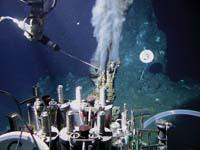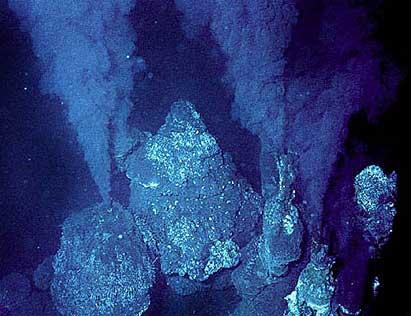Thierry Juteau: a geologist fascinated by the seabed
2007/06/14 Galarraga Aiestaran, Ana - Elhuyar Zientzia
Yesterday, at the Algorri de Zumaia interpretation centre, geologist Thierry Juteau offered a lecture. He is professor emeritus of the University of Juteau Brest and is well known for being the first to visit the hydrothermal chimneys. Precisely, he has spent forty years researching these volcanic systems on the seabed and spoke of his experience at the conference.
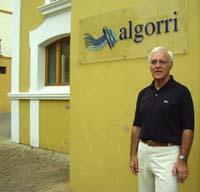
Thierry Juteau (Photo: A. A. Galarraga)
To begin with, Juteau recalled that day he found hydrothermal fireplaces: “I will never forget April 21, 1979. That day we dived into the entrance of the Gulf of California to study the volcanic chain at 2,500 meters deep. Previously the underwater boat Angus took photos and collected samples and, in view of them, we suspected it could be a special place. That's why we decided to go there.
We dive into the submarine Alvin. When we reached the bottom we saw some chimneys we already knew. These chimneys were old, they were dead. They had the shells of the living on top, but the shells began to decompose. Suddenly, we found a dark water leak: they were active hydrothermal fireplaces. They were spectacular and around them were gathered multitude of living beings: crabs, worms, prawns...
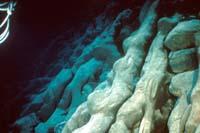
Lava poured by sea bottom chimneys. (Photo: T. T. Juteau)
The sea bottom temperature is 2 °C, and as the maximum temperature measured by us was 23 °C, it could be measured up to 35 °C. But when we approached a fumarole, it melted! So we showed that the black flow coming out of the fireplace was very hot. This allowed the oasis to be at the bottom of the sea. The next time we dive, we carried the right thermometer and confirmed that the water was going out at 350C.”
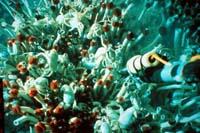
The hydrothermal chimneys are oasis. (Photo: T. T. Juteau)
The composition of the water is also very different from that of the sea, with a high concentration of metallic sulphies, so the basaltic chimneys are surrounded by precipitated metals. Juteau explained how chimneys are created, their characteristics and the life that surrounds them.
He also revealed what the global oceanic crest is and how it works. Among other things, he noted that it is the engine of plate tectonics and explained how the mantle of the earth is renewed. The talk was a good lesson in geology. With his words and images, Juteau managed to transmit to the listeners gathered in Algorri his fascination for the seabed.
In the October issue of Elhuyar Zientzia eta Teknika, we will publish an article on Juteau's research and volcanic activity on the seabed.

Gai honi buruzko eduki gehiago
Elhuyarrek garatutako teknologia



